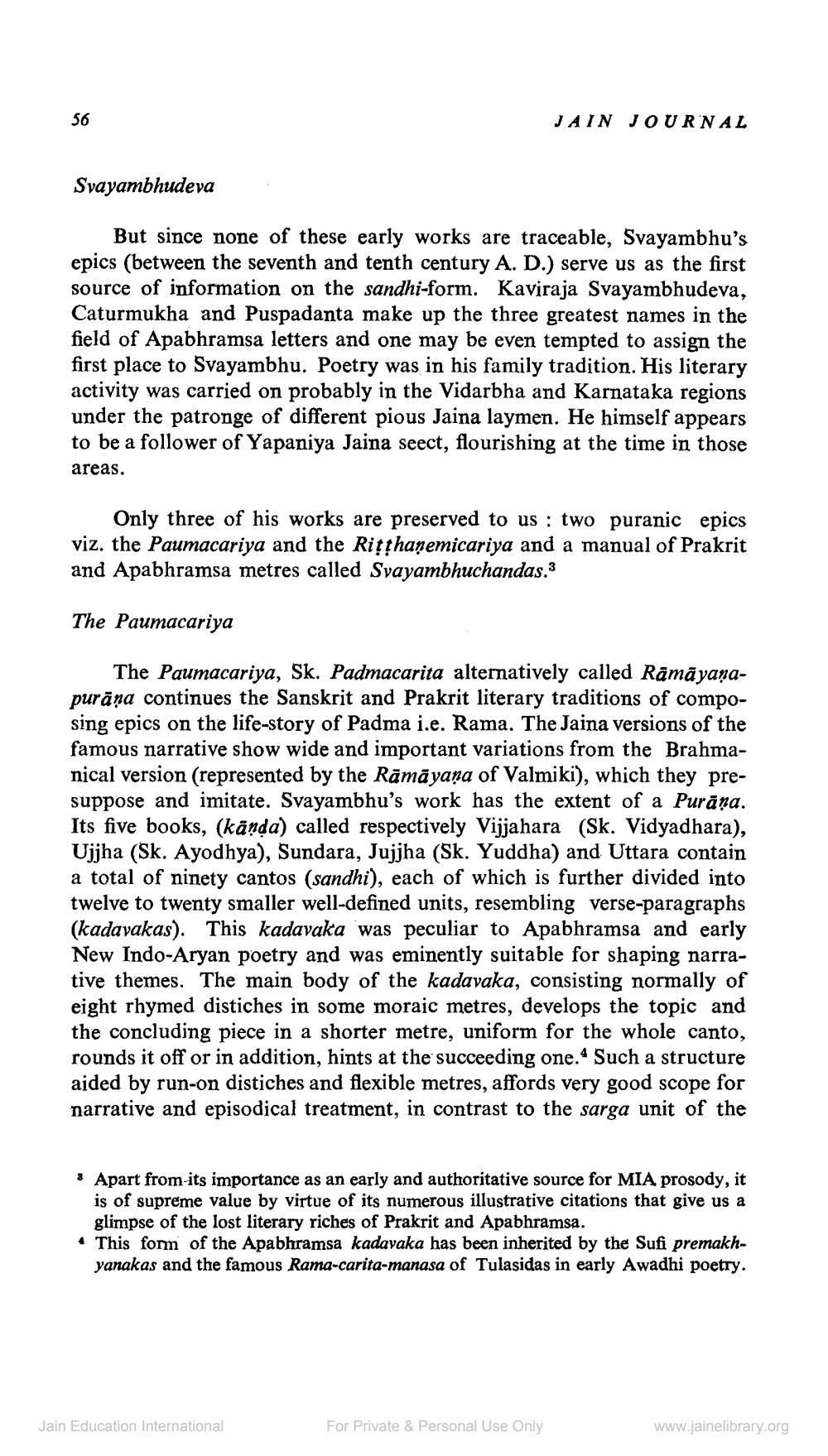________________
JAIN JOURNAL
Svayambhudeva
But since none of these early works are traceable, Svayambhu's epics (between the seventh and tenth century A. D.) serve us as the first source of information on the sandhi-form. Kaviraja Svayambhudeva, Caturmukha and Puspadanta make up the three greatest names in the field of Apabhramsa letters and one may be even tempted to assign the first place to Svayambhu. Poetry was in his family tradition. His literary activity was carried on probably in the Vidarbha and Karnataka regions under the patronge of different pious Jaina laymen. He himself appears to be a follower of Yapaniya Jaina seect, flourishing at the time in those areas.
Only three of his works are preserved to us : two puranic epics viz. the Paumacariya and the Ritthanemicariya and a manual of Prakrit and Apabhramsa metres called Svayambhuchandas.3
The Paumacariya
The Paumacariya, Sk. Padmacarita alternatively called Rāmāyanapurāna continues the Sanskrit and Prakrit literary traditions of composing epics on the life-story of Padma i.e. Rama. The Jaina versions of the famous narrative show wide and important variations from the Brahmanical version (represented by the Rāmāyana of Valmiki), which they presuppose and imitate. Svayambhu's work has the extent of a Purāna. Its five books, (kānda) called respectively Vijjahara (Sk. Vidyadhara), Ujjha (Sk. Ayodhya), Sundara, Jujjha (Sk. Yuddha) and Uttara contain a total of ninety cantos (sandhi), each of which is further divided into twelve to twenty smaller well-defined units, resembling verse-paragraphs (kadavakas). This kadavaka was peculiar to Apabhramsa and early New Indo-Aryan poetry and was eminently suitable for shaping narrative themes. The main body of the kadavaka, consisting normally of eight rhymed distiches in some moraic metres, develops the topic and the concluding piece in a shorter metre, uniform for the whole canto, rounds it off or in addition, hints at the succeeding one. Such a structure aided by run-on distiches and flexible metres, affords very good scope for narrative and episodical treatment, in contrast to the sarga unit of the
Apart from its importance as an early and authoritative source for MIA prosody, it is of supreme value by virtue of its numerous illustrative citations that give us a
glimpse of the lost literary riches of Prakrit and Apabhramsa. 4 This form of the Apabhramsa kadavaka has been inherited by the Sufi premakh
yanakas and the famous Rama-carita-manasa of Tulasidas in early Awadhi poetry.
Jain Education International
For Private & Personal Use Only
www.jainelibrary.org




